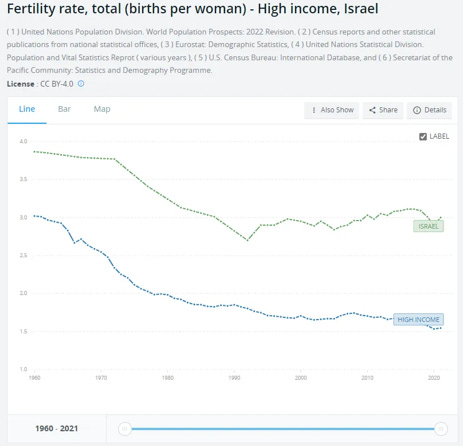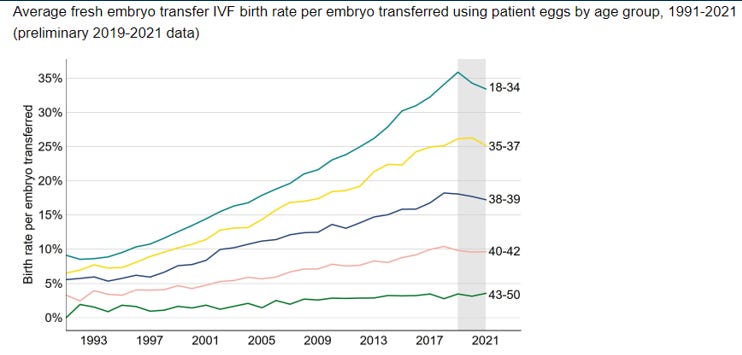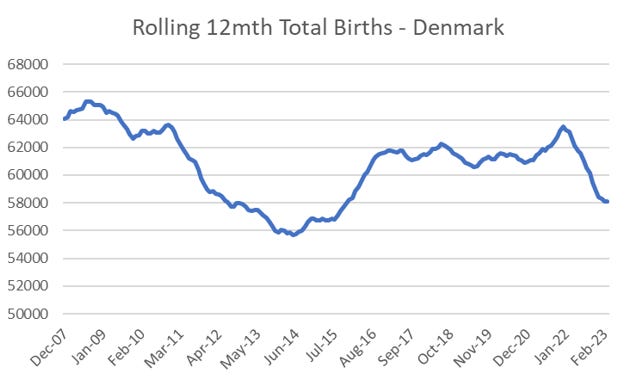The Economist have dedicated the Technology Quarterly in this week’s edition to IVF. I would recommend reading it. My focus has been on using technology to bring about a change in demographics, while the Economist looks at the more practical, health and emotional side of IVF. It also looks at potential new technologies which would revolutionise assisted reproductive technology (ART). One of my findings on ART to change demographics is that it requires political support. Israel, for many reasons, is an extremely pro-natal nation. It dominates in cycles per million people.
With a focus on pro-natal policies unseen anywhere else (and matched by general acceptance) has fertility rates unseen in other rich nations. Israel covers all costs until a mother has two “take home” babies.
In the US, the old relationship between income and number of children has broken down. In part because IVF is expensive.
One excellent point from the Economist is that people often focus on the 25% success rate of embryo transfer leading to a full pregnancy for women aged 35 - 37. The reality is that many women aged 35-37 who conceive naturally probably also suffered a number of lost embryos as well, but as these were never known about and are not considered. It is possible that IVF has similar success rates to natural conceived births. Either way, the trend for improvements in IVF treatments have been very strong over the last 20 years.
Is IVF going to change fertility rates in other rich nations? Well recently released data in the UK shows that 2021 saw record cycles in the UK.
Although that same data release shows that NHS funded IVF treatment is falling. Without government funding, it is hard to see birth rates changing dramatically.
Data to May of 2023 shows that cycles in Australia are slowing after a post-Covid spike. Australian government covers around half the cost of IVF.
Perhaps even more depressingly, Denmark, which has the most liberal IVF policies in Europe, has seen live births drop back. This is suggestive that rule changes to allow any woman to receive IVF treatment only caused a one time boost from women that had previously been denied IVF treatment. Denmark has the technology and the funding, but births are falling again. It seems to me that the population also needs to be pro-natal, as in Israel, to change demographic trends.
Perhaps the most exciting part of the Economist article was to talk about in vitro gametogenesis, which open the way to potentially creating eggs from skin cells. This would solve the biggest problem in IVF, the cultivation of eggs. More interestingly is that Japanese research is leading in this area, making me more certain that predictions of a collapsing Japanese population by 2100 will likely be very wrong.










